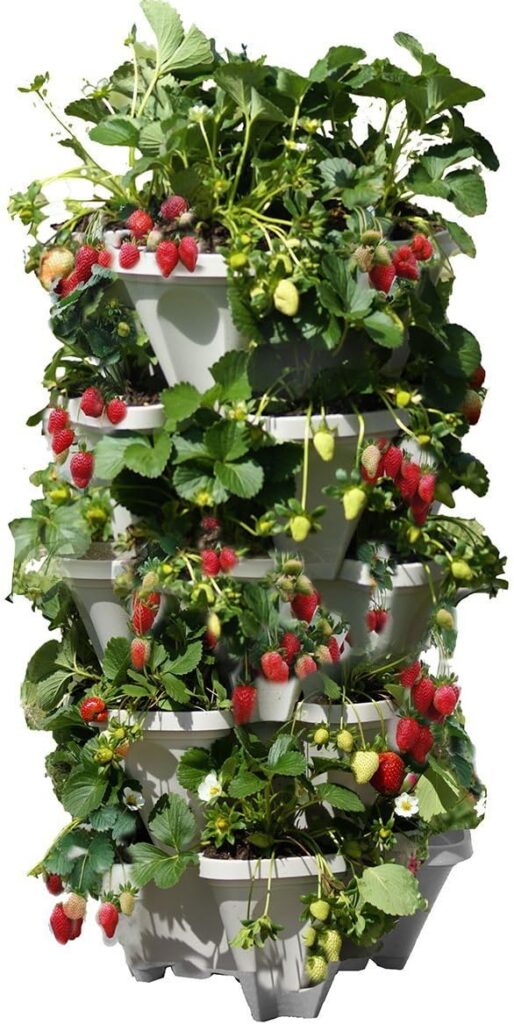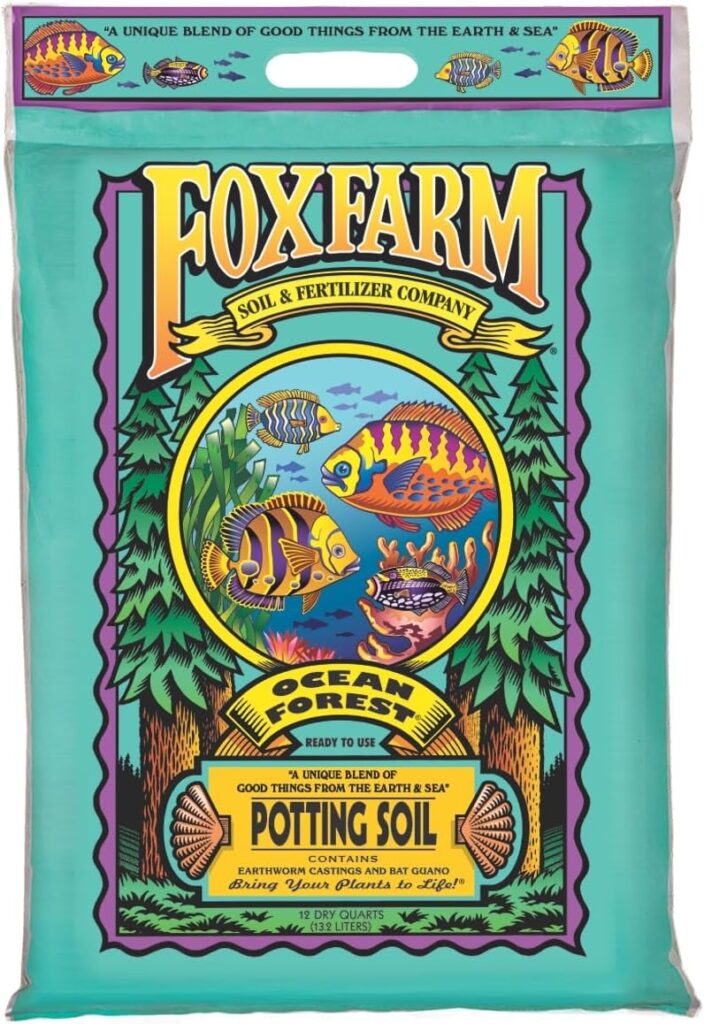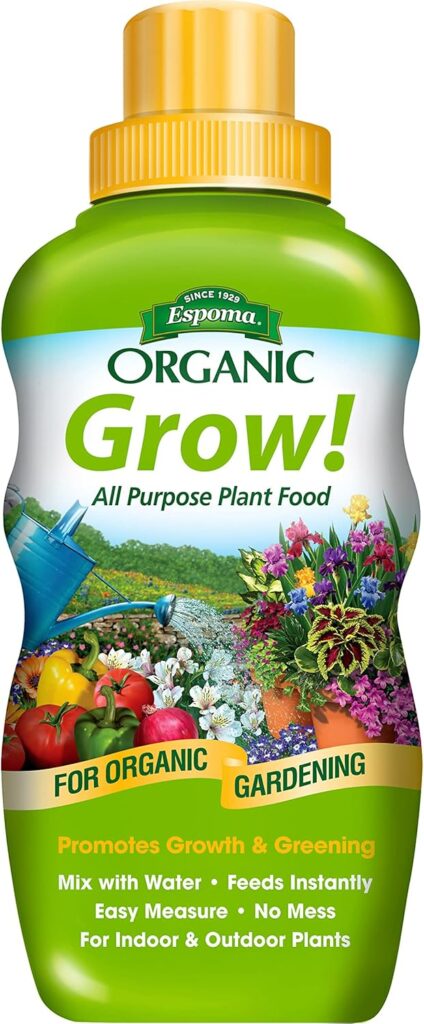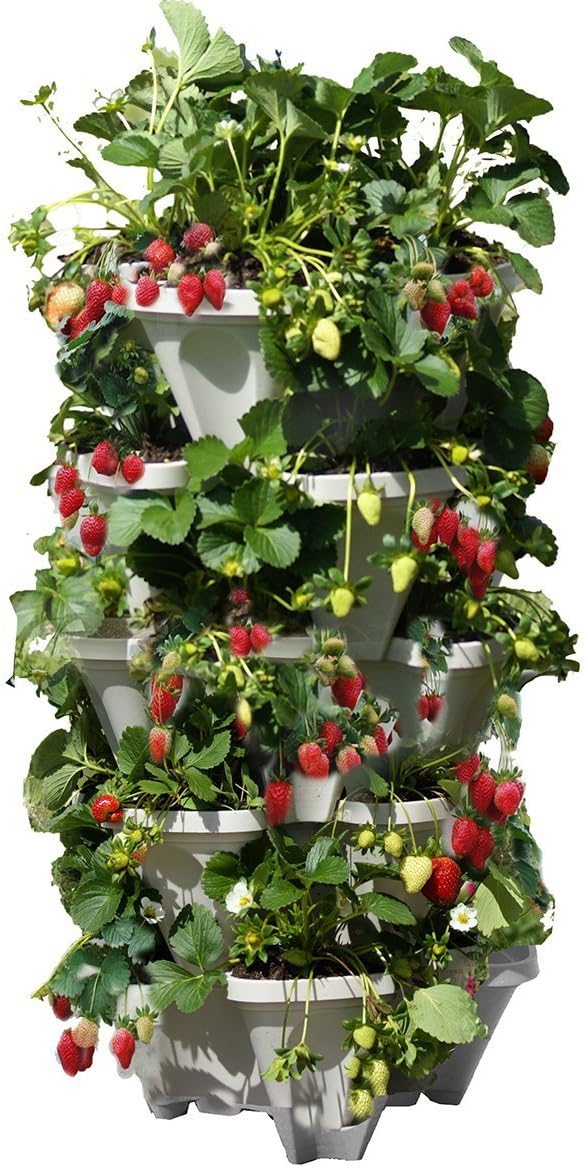Dreaming of lush greenery, vibrant flowers, or even harvesting your own fresh food, but feel limited by your apartment balcony, tiny patio, or lack of a traditional backyard? You’re not alone! Many aspiring gardeners believe that a sprawling yard is a prerequisite for a thriving garden. But here at SmallSpaceGardenPro.com, we know that a lack of square footage should never be a barrier to your gardening ambitions. Welcome to your ultimate Small Space Gardening for Beginners guide!
The truth is, some of the most innovative, beautiful, and productive gardens are cultivated in the most compact environments. Whether you have a sun-drenched windowsill, a cozy balcony, or a small urban backyard, this guide will walk you through the essentials of small space gardening for beginners. We’ll cover everything from understanding your unique environment and choosing the right plants, to selecting containers and mastering basic care. Get ready to transform your limited area into a flourishing green oasis and discover the immense joy of growing your own!
Why Embrace Small Space Gardening? The Big Rewards of Going Small!
Before we dive into the “how-to,” let’s explore the “why.” Small space gardening for beginners isn’t just a trend; it’s a rewarding lifestyle choice with a multitude of benefits, even if you’re starting with just a single pot.
- Fresh Food at Your Fingertips: Imagine stepping out to snip fresh herbs for dinner, picking a ripe tomato from your patio, or adding homegrown lettuce to your salad. The flavor and satisfaction are unparalleled.
- Enhanced Well-being: Interacting with plants has proven therapeutic benefits. Gardening, even on a small scale, can reduce stress, boost your mood, and provide a mindful escape from the everyday hustle.
- Beautify Your Space: Plants add life, color, and texture to any environment, transforming a drab balcony or plain windowsill into a vibrant and inviting area.
- Connect with Nature: In urban settings, a small garden can be a vital connection to the natural world, offering a daily dose of green.
- Sustainable Living: Growing even a small portion of your own food reduces your carbon footprint, minimizes food miles, and allows you to control what goes into your food (e.g., avoiding pesticides).
- A Rewarding Hobby & Learning Experience: Watching a seed sprout and grow into a mature plant is incredibly fulfilling. Small space gardening for beginners is a fantastic way to learn about plant life cycles and basic ecology.
- Save Money: While there’s an initial investment, growing your own herbs, vegetables, or cut flowers can save you money in the long run.
Your First Step: Assessing Your Small Space Like a Pro
Successful small space gardening for beginners starts with understanding the unique conditions of your growing area. Don’t just rush out and buy plants; a little observation and planning will set you up for success.
Understanding Sunlight: The Lifeblood of Your Garden
- Track the Sun: This is the most critical factor. Observe your space throughout the day to see how many hours of direct sunlight it receives and at what times.
- Full Sun: 6+ hours of direct sunlight per day. Ideal for most vegetables, fruits, and many flowering plants.
- Partial Sun/Partial Shade: 4-6 hours of direct sun, or consistent dappled light. Suitable for some vegetables (like leafy greens) and many ornamentals.
- Full Shade: Less than 4 hours of direct sun, or mostly bright, indirect light. Best for shade-tolerant plants…
- Know Your Aspect:
- South-facing: Generally the sunniest and warmest.
- West-facing: Strong afternoon sun, can get very hot.
- East-facing: Gentle morning sun, afternoon shade.
- North-facing: Mostly shade, receives the least direct sun.
Considering Your Climate and Microclimate
- Local Climate: Understand your USDA hardiness zone (if in the US) or general climate conditions (frost dates, average temperatures). This helps you choose plants that will thrive.
- Microclimate: Your specific small space can have its own microclimate. Balconies can be windier or hotter (due to reflected heat from buildings) than ground-level gardens. A sheltered patio might be warmer. Observe these unique conditions.
Space Realities: What Can You Realistically Accommodate?
- Measure Your Space: Know the dimensions of your balcony, patio, or windowsill area.
- Think Vertically: Limited floor space? Look up! Walls, railings, and hanging spaces offer fantastic opportunities for vertical gardening.
- Weight Limits: This is crucial for balconies and rooftops. Pots filled with soil and plants can be very heavy. Check any weight restrictions for your structure. Opt for lightweight pots and potting mixes.
- Accessibility: Ensure you can easily reach your plants for watering, pruning, and harvesting.
Rules and Regulations
If you live in an apartment, condo, or a home with an HOA, check the rules regarding balcony gardens, railing planters, or any structures you might want to add. It’s better to know upfront!
Choosing the Right Plants for Your Small Space Garden
Once you understand your space, it’s time for the exciting part: selecting your plants! For small space gardening for beginners, it’s wise to start with plants known for being relatively easy to care for and productive in containers.
Best Edibles for Small Space Gardening Beginners
- Leafy Greens: Lettuce (loose-leaf varieties), spinach, kale, Swiss chard, arugula. Many are “cut-and-come-again,” providing multiple harvests.
- Radishes: Grow incredibly quickly, often ready in a month!
- Bush Beans: Compact and don’t require much trellising.
- Peas (Dwarf Varieties): Sugar snap or snow peas can be grown with minimal support.
- Herbs: Basil, mint (in its own pot!), parsley, chives, oregano, thyme, rosemary. Most are very productive in pots.
- Dwarf/Patio Tomatoes: Look for determinate varieties specifically bred for containers, like ‘Tiny Tim,’ ‘Patio Princess,’ or ‘BushSteak.’
- Peppers (Compact Varieties): Bell peppers or smaller chili peppers can do well in pots with enough sun.
- Strawberries: Alpine varieties or everbearing types are great for hanging baskets or pots.
Beautiful Blooms: Flowers that Thrive in Containers
- Annuals: Petunias, marigolds, pansies, impatiens (for shade), begonias, zinnias, lobelia, alyssum. These provide color for a season.
- Perennials (Compact Varieties): Geraniums (pelargoniums), compact lavender, dwarf roses, coreopsis, salvia. These can come back year after year if suited to your climate and properly cared for.
Consider Plant Habits: Bushy, Trailing, or Climbing?
- Bushy: Good for individual pots (e.g., basil, peppers).
- Trailing: Excellent for hanging baskets or the edges of window boxes (e.g., lobelia, trailing petunias, some thymes).
- Climbing: Can utilize vertical space with a small trellis or support (e.g., some peas, compact climbing beans, small flowering vines).
Read Plant Tags and Do Your Research!
Plant tags provide vital information about a plant’s light, water, and size requirements. Supplement this with a bit of online research for specific container gardening advice for your chosen varieties.
Containers & Soil: The Foundation of Your Small Garden
In small space gardening for beginners, your containers and soil are your garden beds. Choosing wisely is key.
Types of Containers for Small Spaces
The options are plentiful, catering to different needs and aesthetics:
- Standard Pots: Available in terracotta, plastic, ceramic, and fabric. Choose a size appropriate for the mature plant.
- Window Boxes: Perfect for windowsills or railings, great for herbs, lettuce, and smaller flowers.
- Railing Planters: Designed to sit securely on balcony or deck railings.
- Hanging Baskets: Ideal for trailing plants, freeing up floor space.
- Vertical Planters: Excellent for maximizing small footprints. These can be tiered systems, wall-mounted pockets, or stackable pots. A Versatile Vertical Tiered Planter can allow you to grow a variety of plants in a very small area.
- Fabric Pots: Lightweight, breathable, and promote healthy root growth by “air pruning.”

Importance of Drainage
This cannot be overstated! Almost all plants dislike “wet feet.”
- Ensure every container has drainage holes at the bottom to allow excess water to escape.
- If a decorative pot doesn’t have holes, use it as a cachepot – place a smaller pot with drainage holes inside it, and empty any collected water from the cachepot after watering.
Choosing the Right Potting Mix
- Never use garden soil from your yard in containers. It’s too heavy, compacts easily, may harbor pests or diseases, and doesn’t drain well in a confined space.
- Use a Quality Potting Mix: Look for bags labeled “potting mix,” “container mix,” or “potting soil” (though the latter can sometimes be confusing). These are specially formulated, lightweight, sterile mixes, often containing peat moss, coir, perlite, vermiculite, and sometimes a starter fertilizer. A Premium Organic Potting Mix for Containers will give your plants a great start.

DIY Container Ideas
Get creative and save money! Many household items can be upcycled into planters:
- Old buckets (drill drainage holes)
- Coffee cans
- Colanders (already have drainage!)
- Sturdy plastic food containers
Essential Tools for the Small Space Gardener
You don’t need a shed full of tools for small space gardening for beginners. A few basics will suffice:
- Hand trowel & transplanter
- Watering can (with a rose attachment for gentle watering) or small hose with adjustable nozzle
- Pruning snips or sharp scissors
- Gardening gloves
- Plant labels
- (Optional but helpful) Moisture meter

There are numerous simple toolkits out there that can get you started down your gardening path! This is the one we suggest for ANY beginner. A GROWIT kit has anything a budding green-thumb enthusiast needs!
Basic Care for a Thriving Small Space Garden
Consistent care will keep your small garden happy and productive.
Watering Wisely
- Check Soil Moisture: The most common mistake for beginners is over- or under-watering. Stick your finger about an inch into the soil. If it feels dry, it’s time to water.
- Water Thoroughly: When you do water, water deeply until you see water draining from the bottom holes. This encourages roots to grow deeper.
- Frequency Varies: Plants in small pots, sunny spots, or windy balconies will dry out faster. You might need to water daily in hot summer weather.
- Water the Soil, Not the Leaves: Wetting foliage can encourage fungal diseases, especially if done late in the day.
Feeding Your Plants
Plants in containers have limited access to nutrients, as they use up what’s in the potting mix.
- Fertilize Regularly: Most container plants benefit from regular feeding during the growing season (spring and summer).
- Choose a Balanced Fertilizer: A general-purpose liquid fertilizer or a slow-release granular fertilizer formulated for container plants works well. An All-Purpose Liquid Organic Fertilizer is a good choice for edibles and ornamentals.
- Follow Instructions: Don’t over-fertilize, as this can harm plants.

Pest and Disease Prevention & Management
- Healthy Plants are Less Susceptible: Proper watering, good airflow, and adequate light are your first lines of defense.
- Inspect Regularly: Check your plants often for early signs of pests (aphids, spider mites, whiteflies) or diseases (powdery mildew, leaf spots).
- Simple Solutions: Often, pests can be dislodged with a strong spray of water or wiped off with a damp cloth.
- Organic Options: If problems persist, use insecticidal soap or neem oil, which are generally safe for edibles and less harmful to beneficial insects.
- Remove Affected Parts: Prune off any heavily infested or diseased leaves/stems immediately.
The Importance of Observation
Spend a few minutes with your plants each day. Notice changes in leaf color, new growth, or any potential issues. This connection will help you become a more intuitive and successful gardener.
Creative Small Space Gardening Ideas to Maximize Your Yield & Beauty
Don’t let a small footprint limit your creativity!
- Go Vertical: Use wall-mounted planters, trellises for climbing plants, or stacked planters.
- Companion Planting: Certain plants grown together can benefit each other (e.g., basil near tomatoes may deter pests). Research good companions for containers.
- Succession Planting: For quick-growing crops like lettuce or radishes, sow small batches every 2-3 weeks for a continuous harvest.
- Utilize Windowsills: They are perfect for small herbs, microgreens, or starting seeds.
- Color & Texture Themes: Plan your plantings for visual appeal by combining plants with different colors, leaf textures, and growth habits.
FAQs: Getting Started with Small Space Gardening for Beginners
Leafy greens like loose-leaf lettuce, spinach, or herbs like basil, mint, and chives are very forgiving and productive. Radishes are also incredibly fast and easy.
Most common vegetables and many flowering plants need at least 6 hours of direct sunlight per day. However, many herbs and leafy greens can thrive with 4-6 hours. Always check specific plant requirements.
While you might not achieve full self-sufficiency, you can certainly grow enough to supplement your meals with fresh, flavorful herbs, salads, and some vegetables. The taste and satisfaction are well worth it!
Overwatering or underwatering is very common. Poor container drainage and using the wrong type of soil (like heavy garden soil) are also frequent pitfalls.
Start by inspecting plants regularly and hand-picking pests or using a jet of water. Encourage beneficial insects if possible. If needed, use organic options like insecticidal soap or neem oil. Avoid harsh chemical pesticides, especially on edibles.
Your Green Adventure Awaits!
Starting your journey with small space gardening for beginners is an exciting step towards a greener, more flavorful, and more fulfilling lifestyle. Don’t be intimidated by a lack of space; embrace the challenge and discover the incredible potential hidden in your balcony, patio, or even windowsill. With a bit of planning, the right plants, and consistent care, you’ll be amazed at what you can grow.
So, take these tips, get your hands a little dirty, and watch your small space transform into a vibrant green haven. Happy gardening!
We’d love to hear from you! What are your biggest questions about starting a small space garden? Or, if you’re already growing, what’s your favorite tip for beginners? Share your thoughts and experiences in the comments below. Don’t forget to subscribe to SmallSpaceGardenPro.com for more expert advice and inspiration!


Leave a Reply